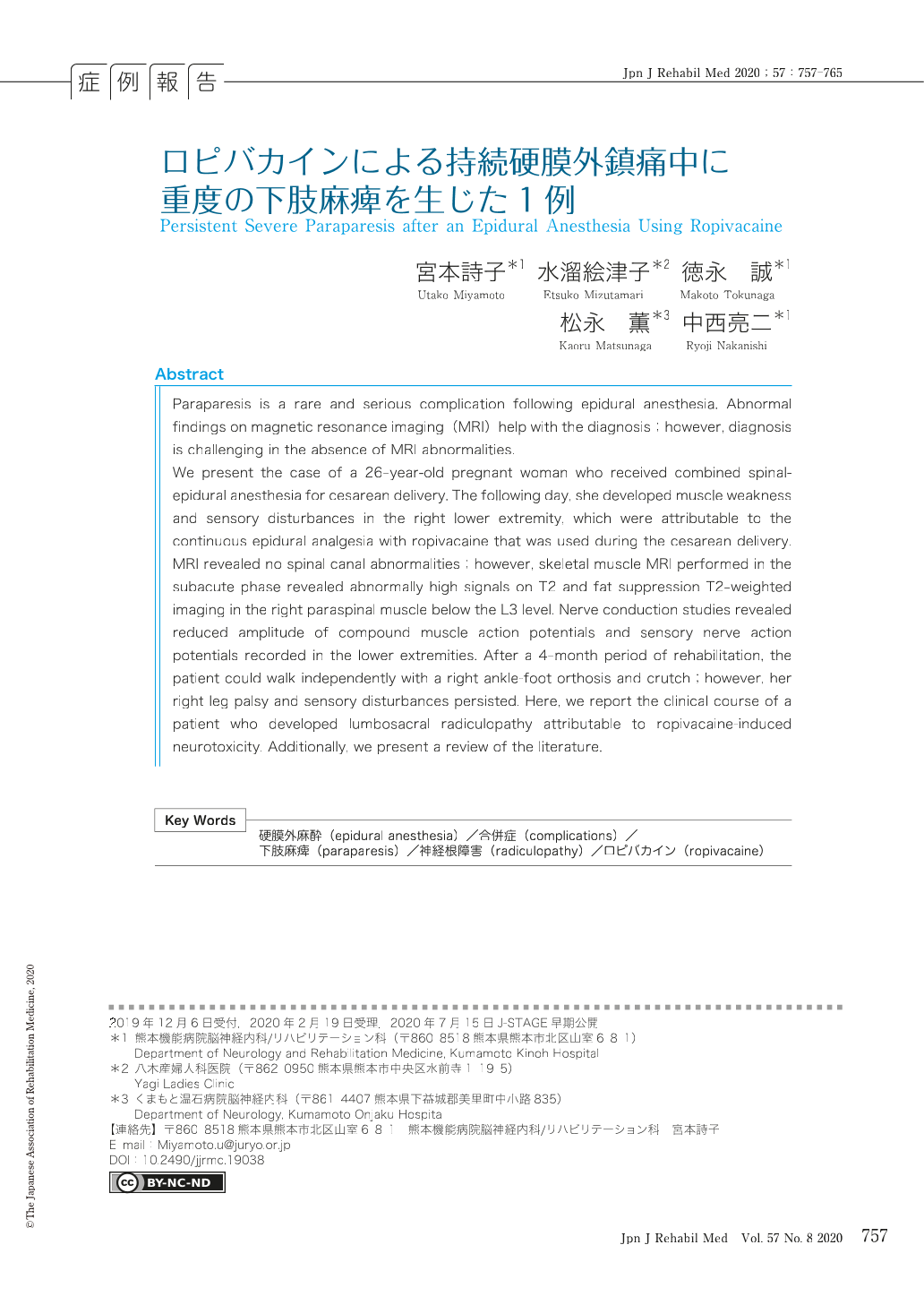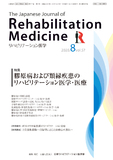Japanese
English
- 販売していません
- Abstract 文献概要
- 1ページ目 Look Inside
- 参考文献 Reference
はじめに
硬膜外麻酔は広く行われているが,ごくまれに下肢麻痺を生じることがある1).磁気共鳴画像(MRI)で異常があれば診断は容易だが,画像で異常を認めない場合には診断に苦慮する場合が多い1).今回われわれは,ロピバカインによる持続硬膜外鎮痛中(手術翌日)に右優位の両下肢麻痺と感覚障害を生じた1症例を経験した.本症例は,MRIで脊柱管内に異常所見を認めず,亜急性期にL3より遠位の右傍脊柱筋に脂肪抑制T2強調画像で脱神経所見を反映する高信号域を認めた.神経伝導検査では,下肢のcompound muscle action potential(CMAP)とsensory nerve action potential(SNAP)の振幅が低下していた.ロピバカインの神経毒性による腰仙部神経根障害と考えられた本症例の臨床経過について,文献的考察を加えて報告する.
Paraparesis is a rare and serious complication following epidural anesthesia. Abnormal findings on magnetic resonance imaging (MRI) help with the diagnosis;however, diagnosis is challenging in the absence of MRI abnormalities.
We present the case of a 26-year-old pregnant woman who received combined spinal-epidural anesthesia for cesarean delivery. The following day, she developed muscle weakness and sensory disturbances in the right lower extremity, which were attributable to the continuous epidural analgesia with ropivacaine that was used during the cesarean delivery. MRI revealed no spinal canal abnormalities;however, skeletal muscle MRI performed in the subacute phase revealed abnormally high signals on T2 and fat suppression T2-weighted imaging in the right paraspinal muscle below the L3 level. Nerve conduction studies revealed reduced amplitude of compound muscle action potentials and sensory nerve action potentials recorded in the lower extremities. After a 4-month period of rehabilitation, the patient could walk independently with a right ankle-foot orthosis and crutch;however, her right leg palsy and sensory disturbances persisted. Here, we report the clinical course of a patient who developed lumbosacral radiculopathy attributable to ropivacaine-induced neurotoxicity. Additionally, we present a review of the literature.

Copyright © 2020, The Japanese Association of Rehabilitation Medicine. All rights reserved.


